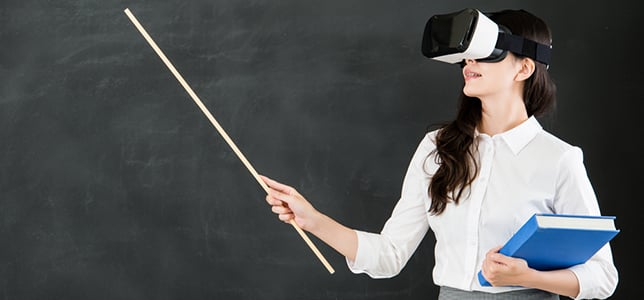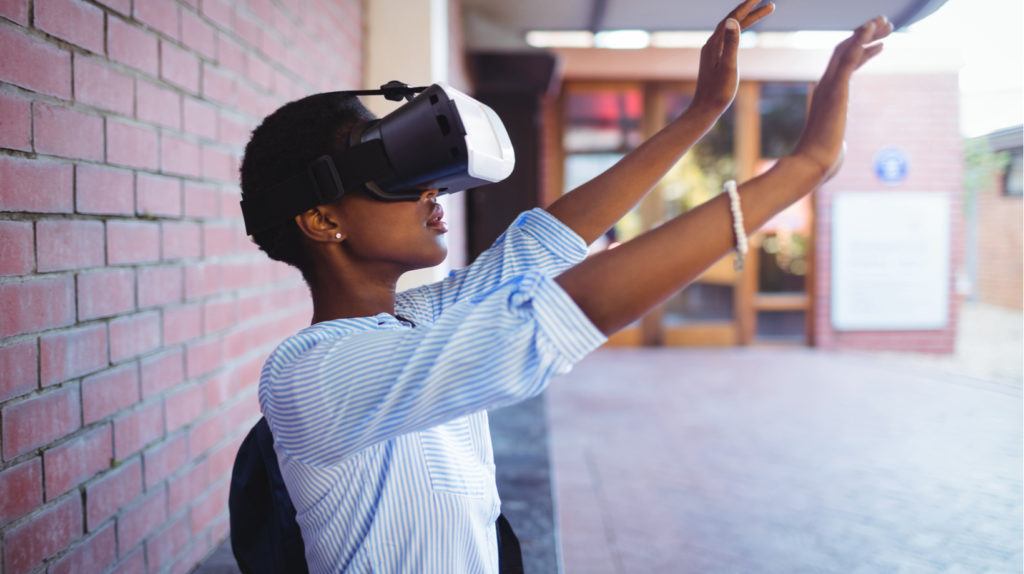The key to New Zealand’s future success lies in our ability to adopt new technologies, and to be at the origin of new digital capability by converging, integrating or replacing existing technologies aid Dean Butchers GM Business Attraction & Investment, New Zealand.
Recently, the government of New Zealand announced that it will bring virtual reality into all schools in the year 2020. We know that there must be some teachers out there wondering how to start implementing VR in the classroom and what kind of impact it will bring.

Implementing new technologies in the classroom can be quite challenging for teachers. We understand that the adaptation process can be overwhelming, however, it's important to understand how new technologies work and what’s involved when bringing them into the classroom. This helps teachers stay up-to-date and expanding their students’ learning. So we’ve brought you 5 ways that you can incorporate it into your lessons:
1. Immersive Language Learning
As with many educational experiences, the ability for teachers to engage in immersive language teaching is limited by resources and geography. Fortunately, there are several language learning apps developed that combine language with VR to create these experiences. Students are able to practice conversational language skills from within a series of realistic simulations. They can also use VR to interact with students from other countries and go on virtual sightseeing tours.
2. Creating Better Learning Opportunities For Underserved Populations
Some educators have been fortunate enough to create unique and enriching learning experiences by taking students on field trips. For others, that’s a bit more difficult. They may be serving students who are:
- Disabled to the extent that field trips are not optional
- Home-bound, institutionalized, or hospitalized
- Live in remote areas
Teachers can use VR to give to this population of students access to places they wouldn’t ever have otherwise.
3. Giving Students The Opportunity To Create With VR
Students don’t need to simply consume VR content. They can also spend time using VR technology to create. For example, Google’s Tilt Brush tool allows users to create three-dimensional art in VR. The tool provides students with a variety of brush types and palettes. Students can then wear VR headsets while they create beautiful art including characters, landscapes, skylines, and more.
That’s not all. Coding in the classroom isn’t new, but VR coding is. First students learned coding skills to build games, apps, and even robotics programming, now they can be taught to apply those skills to VR. Students can now create VR apps and test them out in the classroom.
4. Modeling And Simulations
With Virtual Reality, students can use modeling to understand and test a variety of concepts and theories in engineering, math, and science. VR simulations provide students with important experiences and necessary information for ongoing assessments. In addition to this, once the original cost of hardware and software is covered, other expenses are minimal.
5. Developing Empathy Within Students
Many students have never experienced war where they live. They haven’t lived in abject poverty or with little to no resources. Nor have they experienced a devastating natural event. Putting major tragedies aside, many students simply haven’t had experience or exposure to different cultures, traditions, or belief systems.
Current events curriculum, pen pal programs, and other efforts can help. Still, their impact is limited. Fortunately, VR can be used to put students in places they have never been - and in contact with people they may not otherwise meet. Imagine students ‘sitting’ in a classroom in Kenya, navigating the daily search for clean water in Flint Michigan, or being taken on tour in a country where there is currently political unrest. These experiences can increase understanding and develop a sense of empathy.
New Zealand Discover more with RobotLAB VR Kits!
Check our VR kits and travel with your students from the comfort of your classroom!
This article is original from: https://elearningindustry.com/virtual-reality-in-the-learning-process-5-ways-implement




Comments